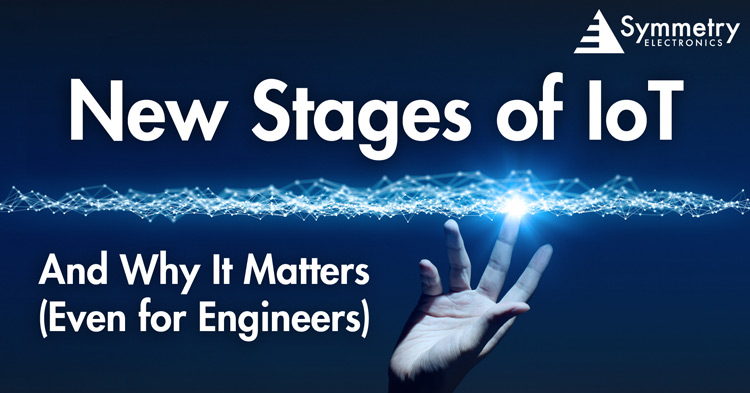- Home
- Symmetry Blog
- The New Stages of IoT, and Why It Matters
The New Stages of IoT, and Why It Matters (Even For Engineers) | Symmetry Blog
About Symmetry Electronics
Established in 1998, Symmetry Electronics, a Division of Braemac, is a global distributor of electronic components and systems. Combining premier components and comprehensive value-added services with an expert in-house engineering team, Symmetry supports engineers in the design, development, and deployment of a broad range of connected technologies.
Exponential Technology Group Member
Acquired by Berkshire Hathaway company TTI, Inc. in 2017, Symmetry Electronics is a proud Exponential Technology Group (XTG) member. A collection of specialty semiconductor distributors and engineering design firms, XTG stands alongside industry leaders TTI Inc., Mouser Electronics, and Sager Electronics. Together, we provide a united global supply chain solution with the shared mission of simplifying engineering, offering affordable technologies, and assisting engineers in accelerating time to market. For more information about XTG, visit www.xponentialgroup.com.

While we love talking about how IoT is changing the way we work and live, the focus of IoT has also become scattered across different purposes and industries without a concrete identity.
With IoT invading into every industry in every form imaginable, will IoT ever finally move beyond pure invention and become a refined tech staple? Or will it continue to conform to the latest trends without any sign of stability?
In 2016, Gartner published the maturity model for the Internet of Things, providing "an evolutionary framework that encompasses five levels and seven dimensions" for companies to use as a "model to understand, track and maximize the business impact of IoT investments across their organizations."
The five stages are as follows:
- Initiating
- Exploratory
- Defined
- Integrated
- Optimizing
It is these five stages that Anthony Sayers refers to in an article on IoT Now about whether IoT will ever In order for IoT to work in a more data-driven environment, businesses need to move past the first tree stages and work towards integrating their IoT systems into all other company processes.
It is not enough that IoT solutions are created to aid a company product - often times these solutions are built outside of everything else within the business, isolated from the rest of the product. Integration is key to moving past IoT simply being a nifty technology add-on and into becoming a seamless but essential component of the business model. As Anthony Sayers points out:
It’s important to understand that IoT cannot be implemented in isolation. This is why integration is a key part of the IoT jigsaw puzzle. By creating a more integrated strategy, businesses will be able to reap the benefits of gaining insights from third party data, in addition to their own data. Not only this, but a more integrated IoT model offers deeper time and trend-based analysis.
Once we are able to implement IoT successfully in this way, it will become engrained so seamlessly that we will stop noticing it as an add-on technology enabler.
This is where we are beginning to see organizations transitioning; business models are starting to take both the predictive and prescriptive elements into consideration. This means connecting all data points to achieve a predictive maintenance strategy.
By changing the way we add IoT into our present technologies, we can provide a successful future for our IoT implementations, rather than creating one-off novelties. Planning how IoT can integrate with the entire business model rather than just the direct "connected" device can make future development of the product easier and less chaotic. Supporting a deep neural network of IoT rather than a single concentrated solution is the key to IoT maturity.
